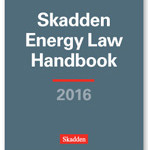Hunton & Williams LLP announces the formation of a global cross-disciplinary legal team to advise corporations and investors on issues related to sustainability and efforts to increase utilization of renewable energy.
In a news release, the firm said this move, which reflects increased client demand for Hunton’s capabilities in these areas, brings together lawyers with global experience in transactional, finance (including “green bonds” and similar programs), corporate, securities, tax, environmental and real estate law to counsel clients on the complex legal issues arising out of participation in the market for renewable energy and related transactions. This initiative also centralizes the firm’s knowledge and experience with data center development and financing.
The release continues:
“Retailers, manufacturers and technology companies are either entering the renewable energy arena for the first time or are significantly bolstering their current positions,” said partner Eric R. Pogue, who heads the firm’s efforts in this space. “This multidisciplinary initiative will focus on the unique legal issues that companies face in meeting their sustainability and clean power procurement goals.”
As part of the firm’s renewable energy practice group, the sustainability and corporate clean power team will counsel corporations and investors on matters related to
– clean power procurement;
– green bonds and similar clean power financing and investment transactions;
– development of sustainable facilities, including data centers;
– tax equity investments;
– joint ventures with renewable energy companies;
– securities law compliance;
– renewable energy certificate (REC) trading;
– project permitting and real estate; and
– environmental law compliance.
The Hunton & Williams global energy practice dates back to the firm’s founding in 1901, and the firm’s experience in the area of renewable energy and clean power started decades before the current global focus on renewable and clean sources of energy. Since these beginnings, the firm’s renewable energy and clean power practice has grown and evolved to meet the changing needs of clients in this dynamic sector of the energy market.
 The Texas Supreme Court ruled that a pipeline company could take private property by eminent domain, answering the question of whether or not the pipeline qualified as a “common carrier” under the Texas Natural Resource Code, reports Snell & Wilmer L.L.P. in its S&W Environmental & Natural Resources law blog.
The Texas Supreme Court ruled that a pipeline company could take private property by eminent domain, answering the question of whether or not the pipeline qualified as a “common carrier” under the Texas Natural Resource Code, reports Snell & Wilmer L.L.P. in its S&W Environmental & Natural Resources law blog.




 Horizontal wells drilled across lease lines were clearly not contemplated in a typical oil and gas lease, and lessors should not be forced to accept a formula for royalty payment to which they have not agreed, advises
Horizontal wells drilled across lease lines were clearly not contemplated in a typical oil and gas lease, and lessors should not be forced to accept a formula for royalty payment to which they have not agreed, advises  BP Plc faces more than $20 million in penalties and surrendered profits after a U.S. regulator found that the energy giant manipulated commodity markets in Texas, according to a report by Bloomberg and published by
BP Plc faces more than $20 million in penalties and surrendered profits after a U.S. regulator found that the energy giant manipulated commodity markets in Texas, according to a report by Bloomberg and published by 
 Twenty-four states are suing to block the Obama administration from implementing its new clean power regulations — the cornerstone of a promise that the United States will reduce greenhouse gas emissions to limit global warming, but some Texas energy companies are not as unanimous in their opposition. That’s because Texas’ energy sector is transforming rapidly,
Twenty-four states are suing to block the Obama administration from implementing its new clean power regulations — the cornerstone of a promise that the United States will reduce greenhouse gas emissions to limit global warming, but some Texas energy companies are not as unanimous in their opposition. That’s because Texas’ energy sector is transforming rapidly,